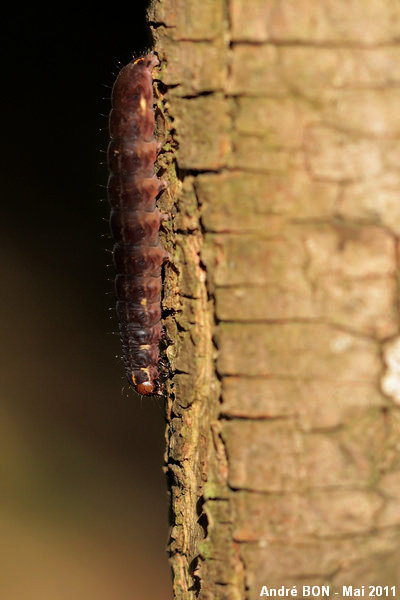
| Satellite (Eupsilia transversa (Hufnagel, 1766)) |

|
|
Scientific name: Eupsilia transversa (Hufnagel, 1766) Common name: Satellite French name: Satellite Order: Lepidoptera Suborder: Heterocera Family: Noctuidae Subfamily: Acronictinae Wingspan: 40-45 mm. Biotope: Deciduous forests and woodland edges. Parks and gardens. Geographic area: All Europe including very northern regions, Asia east to Japan. Flight time: September to April. Imagos are active during temperate winter nights. Number of generations : 1 Caterpillar: Blackish to reddish brown with three thin greyish white lines on the upper side. These lines turn to yellow on the prothorax. There may be some white lateral patches below the spiracles. These are the marks of an interrupted longitudinal stripe. Most of the time you can only see two or three patches near the front and one at the rear. The head is reddish brown and marked with black. Caterpillars are observed from April to June. Host plant: Many deciduous trees and shrubs. These caterpillars can also be carnivorous on caterpillars of other species. |
The Satellite is a noctuidae moth with a variable ground colour, from greyish to reddish brown. The fore wings are crossed by two wavy dark thin lines. The ground colour is slightly darker between these two lines. The most typical characteristic is the yellow or white prominent stigma, associated with two small spots on the margin side. These marks look like one planet and two satellites. This is the origin of the old scientific name, Eupsilia satellitia, and of the common name. The hind wings are brown with a paler fringe. The Satellite is attracted to sugar and to light. |
| [To know more about the Satellite] [Top] |

|
The overall look and the whitish lateral patches, mainly visible near the front, make me rather confident about the species identification. |